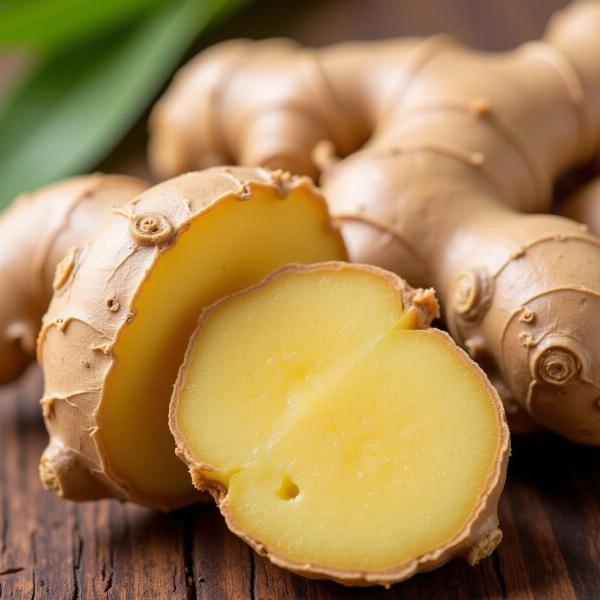Understanding the meaning of “knobby” in Hindi can be tricky, especially given the nuances of both languages. This article delves into the various Hindi translations of “knobby,” exploring their subtle differences and providing practical examples to help you use them correctly. We’ll also look at common usage scenarios and related vocabulary to enrich your understanding of this descriptive word. Whether you’re a language learner, translator, or simply curious, this guide will equip you with the knowledge to confidently navigate the intricacies of “knobby” in Hindi.
Understanding the English Word “Knobby”
Before diving into the Hindi translations, let’s clarify the English meaning of “knobby.” It refers to something covered in knobs or lumps, having a rough, uneven surface. Think of a knobby tree branch, a knobby knee, or a knobby piece of ginger. The word implies a texture that is not smooth, but rather characterized by small protrusions.
Hindi Translations of “Knobby”
“Knobby” can be translated into Hindi in several ways, each carrying slightly different connotations:
- गाँठदार (Ganthdar): This is perhaps the most common and versatile translation. It literally means “knotted” and emphasizes the presence of knots or lumps. It’s suitable for describing things like knobby wood, rope, or even a knobby surface.
- उबड़-खाबड़ (Ubad-Khabad): This term describes a surface that is rough and uneven, often with bumps and hollows. It’s a good choice for depicting terrains, roads, or skin textures.
- गुठलियों वाला (Guthliyon Wala): This phrase, meaning “having small stones or pips,” is best used for describing fruits or vegetables with knobby textures, like a knobby pear or a knobby potato.
- गाँठों भरा (Gathon Bhara): Meaning “filled with knots,” this emphasizes the abundance of knots, suggesting a very rough and uneven surface.
 Knobby Ginger Root
Knobby Ginger Root
Choosing the Right Translation
The best translation depends on the specific context. For instance, when describing a knobby walking stick, “ganthdar” would be appropriate. If you’re talking about a knobby terrain, “ubad-khabad” would be a better fit. Similarly, for fruits like jackfruit, “guthliyon wala” accurately conveys the knobby texture.
Examples of Usage
- The knobby tree branch provided a good grip. – गाँठदार पेड़ की शाखा ने अच्छी पकड़ प्रदान की। (Ganthdar ped ki shakha ne achhi pakad pradan ki.)
- The road was knobby and difficult to drive on. – सड़क उबड़-खाबड़ और ड्राइव करने में मुश्किल थी। (Sadak ubad-khabad aur drive karne mein mushkil thi.)
- The knobby ginger added a spicy kick to the dish. – गाँठदार अदरक ने पकवान में एक मसालेदार तड़का डाला। (Ganthdar adrak ne pakwan mein ek masaledar tadka dala.)
How do you say “My knuckles are knobby” in Hindi?
My knuckles are knobby can be translated as “मेरे पोर गाँठदार हैं” (Mere por ganthdar hain).
Conclusion
Understanding the nuances of “knobby” in Hindi allows for more precise and effective communication. By considering the specific context and choosing the most appropriate translation from the options presented—ganthdar, ubad-khabad, guthliyon wala, or gathon bhara—you can accurately describe the texture and characteristics of knobby objects or surfaces. This knowledge enhances your ability to express yourself fluently and authentically in Hindi.
FAQs
-
What is the most common Hindi translation for “knobby”?
- गाँठदार (Ganthdar) is the most commonly used translation.
-
Can “ubad-khabad” be used to describe a knobby fruit?
- While possible, it’s more suitable for terrains or surfaces, not fruits.
-
Is “guthliyon wala” only used for fruits?
- Primarily, yes. It emphasizes the presence of small, seed-like protrusions.
-
What if none of these translations seem quite right?
- You can combine terms or use descriptive phrases to convey the specific nuance of “knobby.”
-
Where can I learn more about Hindi vocabulary?
- Meaning-Hindi.in offers a wealth of resources for learning Hindi.
-
What is the difference between “ganthdar” and “gathon bhara”?
- “Gathon bhara” emphasizes the abundance of knots, suggesting a very rough surface, while “ganthdar” is more general.
-
How do you describe a knobby surface in Hindi if it’s not rough?
- You might use a phrase like “हल्के उभारों वाला” (halke ubharon wala), which means “having slight bumps.”
Meaning-Hindi.in: Your Partner in Hindi Translation
Meaning-Hindi.in is a leading provider of professional Hindi translation services, catering to diverse needs ranging from business documents and legal texts to technical manuals and website localization. Our team of expert linguists ensures accurate, culturally sensitive, and high-quality translations. We specialize in business and commercial translation, certified and legal document translation, technical and user manual translation, website and software localization, educational and academic translation, express translation, and specialized translation services. Contact us today for a free quote and experience the difference of working with a dedicated team committed to bridging the language gap. Email: [email protected], Phone: +91 11-4502-7584. Let Meaning-Hindi.in be your trusted partner for all your Hindi translation needs.